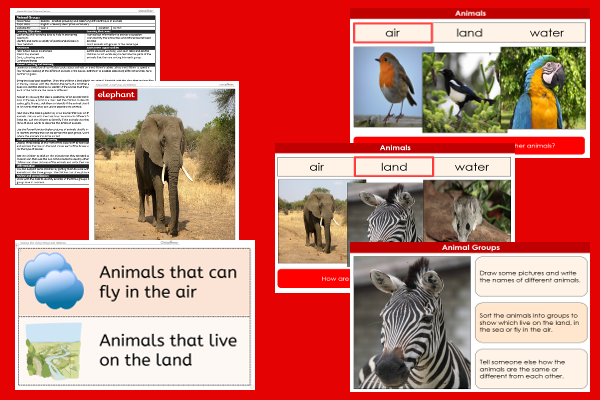Lesson Two – Animal Groups

This science teaching pack for Key Stage One gets the children to practise grouping and classifying different types of animals to illustrate and record their matching habitat locations around the world.
The class can identify and illustrate whether each of the different group[s of animals can be found living on the land, in the sea or flying in the air in a range of locations.
Download this teaching pack including a lesson plan, classroom activities and an interactive presentation to practise grouping and classifying different types of animals to illustrate and record their matching habitat locations around the world
Activities in this teaching pack include display posters to sort animals into different groups to match their habitat locations around the world and a set of cards to select and sort a range of animals into different groups according to whether they can be found living on the land, in the sea or flying in the air in a range of locations.
The interactive presentation can be used to explore how to group and classify different types of animals to illustrate their matching habitat locations.
This lesson is part of a science scheme of work to get the children to identify, describe and compare some of the different animals that can be found living in a jungle habitat including in the tree canopy and undergrowth. There are teaching activities for shared learning, differentiated worksheets to support independent learning and interactive presentations to introduce concepts and key skills.
-

Maths Measurement Assessment
Assess abilities in estimating, measuring and comparing a range of different measurements for length, mass and capacity
-

Family Life
Investigate and reflect on some of the special events and experiences that might happen in the life of a family
-

Final Sounds Word Guess
Practise playing some guessing and matching games to identify the spelling and meaning of words with different final sounds
-

Building Reports
Explore how to collect facts and information to work with when composing and presenting non-chronological reports about buildings that can be found in the local area
